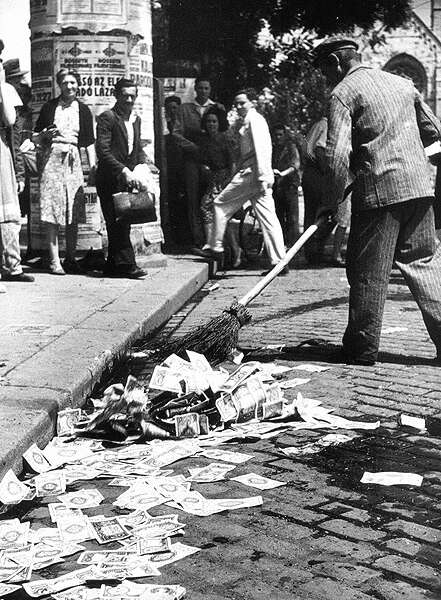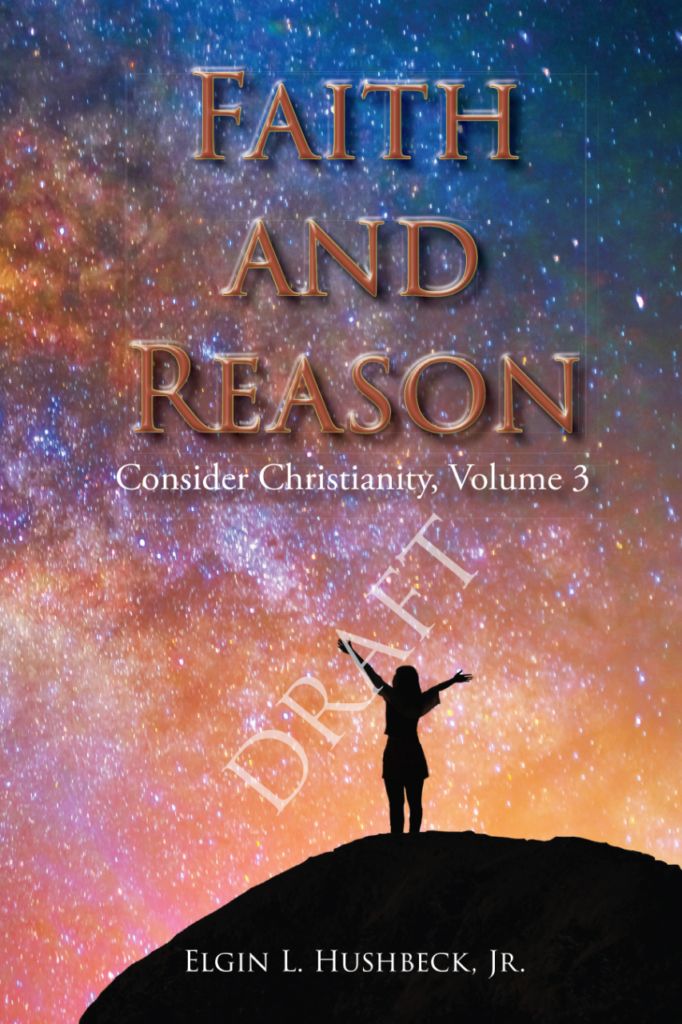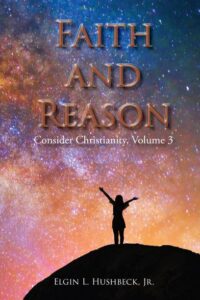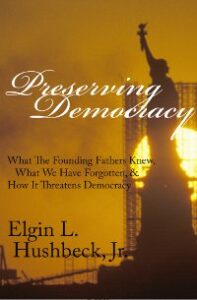The Challenger Economy

No one plans for disaster. Disasters occur, when risks are ignored while planning for success. Following the destruction of the space shuttle Challenger, an extensive investigation was conducted to determine what had happened. Eventually, the cause was tracked down to a problem with the O-ring on the solid-fuel rocket. Under certain circumstances, the O-ring would fail, releasing a jet of flame at the point of failure.
As it turned out, this was a known problem. Similar failures had occurred on some earlier flights. But nothing was done. In fact, that it had failed on earlier flights was seen as a reason not to be too concerned. The O-ring had failed, but without causing other problems. In short, they had gotten away with it in the past, so there was no reason not to think they would get away with it again.
The real issue was that when an O-ring failed, it could fail at any point on the circle. Thus, they had pictures from earlier flights that showed a jet of flame from an O-ring failure going harmlessly out from the solid-fuel rocket’s side. What happened with Challenger was that again the O-ring failed and produced a jet of flame. This time, the failure occurred next to the bracket that secured the rocket to the rest of the shuttle. The jet weakened the bracket to the point that it failed, and the bottom of the rocket broke free from the shuttle. The resulting stresses caused the shuttle to disintegrate.
The O-ring was a problem all along. But since the shuttle was launched without incident many times, it was not considered a problem until it was. By then, it was too late, and the Challenger was destroyed.
Our economy is now in a similar situation. It is a well-established principle that too many dollars chasing too few goods will cause inflation. History has plenty of examples of governments that tried to solve their problems by printing money. They ended up with inflation or even hyperinflation, where the currency becomes worthless. With our growing debt, which had increased significantly for all recent presidents, concern about inflation had grown. The problem is no one knows exactly what will trigger it. No one knows how much money is too much; how much will lead to inflation.
It is like the O-ring problem, you can turn on the presses and print a lot of money, and often you will get away with it. Politicians have already done this several times. So far, they have gotten away with it. Still, each time they try, the amount created gets larger. The Obama stimulus package in 2009 was $787 billion and shocked people by how large it was.
Then came the COVID-19 relief bills at $2.2 Trillion under Trump. Later another $900 billion was added under Trump, and then another $1.9 Trillion under Biden. Now Biden wants an additional $2 trillion for an infrastructure plan. If passed, this would be $7 Trillion or twice the normal federal budget for a year. $7 Trillion is a third of the total GDP. Some want even more. Such large amounts are beyond comprehension.
Strangely, these large amounts seem to make it easier. It is not real money. It is made up. So those who worried about billions don’t seem to have much concern with Trillions.
In the short run, things look good. Like a family struggling with debt that just got a new credit card with a large limit, the coming year will probably be pretty good. Then we will reach the limit, and things will be even worse than they were before.
When that happens, we could always print some more money. That will make any inflation even worse; high inflation could become hyper-inflation. With inflation will come higher interest rates. Higher rates will increase the Government’s interest payment, which will make it even harder to deal with inflation and lead to the temptation to print even more money. Thus the outlook is not good.
Will all this spending spark inflation? Given the size, that would seem almost certain, but we are in uncharted territory. Like the O-ring, it will not be a problem till it is a problem. Like the Challenger, by then, it will be too late.
Alden Thompson and the Law as Gospel
Alden Thompson’s recent article, The Law As Gospel, has an instructive view of the law. For many evangelicals, the law is, for the most part, ignored. The law is in the Old Testament, and something the Jews followed or tried to follow before Jesus. Now, we are under grace. We do not need to follow the law, at least as gentiles.
This is all true. Still, it is not the complete picture and Thompson, seeks to present “a more balanced view.” The law is part of God’s scripture and his plan and not something we should ignore. Towards the end, Thompson presents two views. In one, “the cross is pointed heavenward and the demands of the law.” In the other, “sees the cross pointed earthward, towards the human heart.” The first Thompson calls “objective atonement” and sees Romans 8 as “a good source for that view.” The other he calls “subjective atonement,” which he finds in John 14-17. Thompson concludes,
Some of you will find Romans 8 more helpful, the cross pointed heavenward to the demands of the law. Others will be blessed by John 14-17, the cross pointed earthward to the needs of the human heart. By God’s grace, you will find what nurtures your soul best.
There is a lot to be said for Thompson’s views. The message of both the Old and New Testament is both simple and yet rich and complex. You can study them for a lifetime and still feel like you are scratching the surface. We are also complex, unique individuals. So it is no wonder that some passages and some messages will resonate more with some than others.
Sadly, some Christians conclude there is some deficiency or error on the part of others when this happens. If only they were as spiritual as I am, they would share my concern. Not only is this view wrong, but it also damages the unity of the body. Thompson’s article is a corrective to this view. It is also a corrective to the common ignoring of the law among evangelicals.
Thompson is not arguing that we under the law, but neither should we ignore it. Thompson very effectively uses the examples of seatbelts. If the laws concerning seatbelts went away, would it then follow that we should ignore seatbelts? We are not under the law, so does it follow that we should ignore it? This is not a backdoor way of getting people under the law while not being under it. What Thompson seeks is to “paint a more balanced view of law,” and there is a lot to think about in his article. Some of the laws are to protect; some are to teach; some concerns ceremonial matters. Some are more applicable today than others. We can learn from all of them, even the ones we need not follow.
I do have one quibble, a minor disagreement, with something Thompson says. In talking about the shift from fear as a motivator found in the Old Testament to the love found in the New, Thompson says, “love cannot be commanded.” Here my disagreement is not so much with Thompson, but a disagreement with a common view of our times.
As I write in “To Love and Cherish: Ephesians 5 and the Challenge of Christian Marriage,” the common view today is that love is just something that happens. You either have it, or you don’t. It is not something you can control. Yet God repeatedly commands us to love. We are to love one another, love our neighbor, love the stranger, and husbands are commanded to love their wives. What do such commands mean if love cannot be commanded? If love is something over which we have no control?
Still, this does not detract from Thompsons’ overall message. It is a message worth considering.
Voting by the Honor System
Investigations into the 2020 elections continue to produce evidence of significant irregularities. Given the hypersensitive times in which we live, let me make clear once again that I do not question the legality of President Biden’s election. I pointed out within a few days of the election that it was clear Biden had won. Given the short time frame, it was extremely unlikely that his election would be overturned. This article is more forward-looking and concerned with future elections and measures such as HR1 that would seriously undermine confidence in elections.
In one article about Nevada, 90,000 ballots were returned in Clark county alone after being mailed to the wrong address. Compare this with the fact that for the entire state, only 5863 ballots were returned in the four previous general elections combined.
An article about the Wisconsin election detailed how a Democratic activist was literally given the keys to the room storing absentee ballots. This was part of a project funded by Mark Zuckerberg to influence elections in the five largest communities in Wisconsin. The partisan group wanted to help fix ballots that had been returned with problems.
Democrats argue that there is no proof of fraud, and they are correct. These are irregularities, but there is no proof that any fraud was committed. But then that is our current election system in many states. It is the core behind HR1. Whether intentional or not, the rules make voting extremely easy and at the same time make fraud very difficult to prove.
Democrats seem to argue that if you cannot prove it, it did not happen, but this is nonsensical. Lots of things happen that cannot be proved in a court of law. In essence, Democrats want voting on the honor system. Consider a bank vault with lots of cash. The bank has controls so that only people who have a reason to go in can do so. The bank knows how much is there. If they suspect a problem, given the controls, they can determine, at a minimum, if something was taken. They can probably also figure out who took it.
The way Democrats want elections to run would be like a bank that did not know how much money was in the vault. They would also let people go into and out of the vault at will with no controls or checking. While in theory, only bank employees could go into the vault, in reality, anyone could enter, as it would be illegal to ask if someone were an employee. Everything would be on the honor system. At such a bank, it would be impossible to say if any theft had actually occurred. The Democrats would argue everything was fine, nothing to see here, move along.
The only real difference would be that at a bank, the concern is that people will take money, while in an election, the concern is that people will add votes. Democrats want voting as easy as possible and see rules that would make fraud more difficult as voter suppression. Thus, in California, you can show up and vote for anyone on the voter rolls. I am John Smith, and I want to vote. It is illegal for anyone to ask if you are John Smith. If you are not John Smith, it is not legal to vote as him, but who is to know?
To make matters worse, California also mails out ballots to everyone. In many places, there are more registered voters than eligible voters. In some places, the ratio is as high as 180%. This is 80% more ballots than voters. Given that not everyone eligible to vote votes, that is a lot of extra ballots. They also allow people to collect ballots and turn them in, a process called ballot harvesting. Perhaps they are collecting ballots from voters and turning them in. Perhaps they are just finding excess ballots and voting multiple times. How would you know the difference?
That is the key. Without good controls, there is no way to know if fraud occurs. This is one of the reasons for the big difference in reactions to claims of fraud. Syndicated cartoonist Gary Varvel drew a political cartoon of an election under HR1. In the cartoon, a man comes to a polling place and says, “I’m 16, I’m here Illegally, I have No I.D. and I haven’t registered to vote.” The polling official says, “Here’s your Ballot.” The left-wing fact-checker Politifact rated this Mostly False. In one sense, they are correct; HR1 does not allow someone to declare they are here illegally and still vote. Also, while the bill permits preregistration for 16-year-olds, it does not lower the voting age to sixteen. That is a measures supported by some Democrats, but it is not in HR1.
On the other hand, this is a political cartoon. If you remove the explicit statement about age and illegal status, HR1 would allow such voting. Sure it would not be legal under HR1, but A 16-year-old could show up and vote; there would be little to stop it, which is the point that the conservatives make. So this cartoon could just as well have been rated “Mostly True.”
Democrats act as if we have not had a long history of voter fraud in this country, but we have. In fact, some areas are known for their history of machine politics and fraud. In my book Preserving Democracy, I cite an example of a Congressional election where the documented fraud was greater than the margin of victory. An audit by the Secretary of State found that illegals aliens had not only voted but in numbers over 2.5 times the margin of victory. Still, the election was allowed to stand—nothing to see here, move along.
Democracy depends on free and fair elections. History has shown that we cannot simply depend on the honor system. If we are not careful, we will not be ruled by representatives chosen by the people but rather by those who are the best at cheating.
Why are so many people Dying?
At my work, I routinely get emails with the latest data on the spread of COVID-19 for the state of Wisconsin. Most come from the state itself. (COVID-19: Wisconsin Summary Data | Wisconsin Department of Health Services) There is a lot of good data on the disease. As of March 5, we have had 556,158 confirmed cases, 552,311 who have recovered, and 6477 who have died. This is a 1.1% death rate. 92% of the deaths were 60 or older. Only 1% were below the ages of 40. These figures do not include antigen or antibody tests, nor do they account for the unknown number of people who had COVID but never had any symptoms or whose symptoms were so mild they did not realize they had it.
Looking over the recent report, overall, the things looks encouraging. Active cases have dropped drastically from a high of 75,922 on November 21 to 7,211 in the latest report. Hospitalizations and ICU patients have also declined. New cases per day have also dropped from a high of 7,989 in on November 18 to 350 on March 5. Meanwhile, vaccinations are rolling out with increasing speed, with 59.8% of those 65 and older having already received at least one dose. What was puzzling was the number of death per week.
Not surprisingly, the number of deaths per week peaked along with the number of active cases in November at 381. While the number of active cases has been cut by a factor of 10, the number of deaths was only reduced by less than a factor of 5 to 78. I wondered if this was some lagging indicator, so I compared this with earlier data. Around four weeks ago, we dropped below 10,000 cases per day, which was the peak for the cases in the summer. During the summer, Hospitalization and ICU patients were a little higher, but that is expected. Over the intervening months, doctors have become better at treating COVID.
What was really puzzling is that during the summer, deaths per week peaked at 56. With fewer active cases, we now have 40% more deaths, even if you account for the lag. That is the best case. I wondered if this were due to the currently active cases being among the older, most vulnerable age groups, but that does not appear to be the case. 83% of the new cases are those younger than 60%. Out of the 26,387 people who have even been hospitalized for COVID in Wisconsin, 65% were over 60. Yet, currently, they represent only 48% of those in the hospital.
Thus the puzzle? Why is it that we have fewer active cases, lower hospital and ICU stays, better treatments, and yet 40% more deaths, probably more? Someone with better access to the data will have to answer that.
Christian Idealism
I recently read an article by Eric Scot English, asking, “Do Evangelicals Really Believe in God?” English agued evangelicals have an Idealistic faith. “Idealistic faith is more about the ability to construct an idealized ‘truth’ about God rather than an actual truth. It’s a faith that has more to do with us than God.” (emp. in original). While true of all, progressives, according to English, move past this taking a “leap of faith” to Christian realism. “Realism allows for the demonstration of a faith that is authentically ‘real’ instead of idealized.”
There is a lot of truth in the first part of his argument. English draws upon Kierkegaard’s beliefs, for which there is a lot to be said. Christianity is more about transformational experience than rational disputes over doctrine. Still, even though I agree with Kierkegaard on this, I do not follow him into his rejection of reason.
As such, I find English’s second part artificial, if not a little self-serving. I think it can safely be said that no one understands God. As I write in my forthcoming book, Faith and Reason,
In one respect, there is only one correct answer to the question, what do you believe about God? Not enough. After all, God is infinite; we are finite. How could we ever hope to have a complete understanding of God? Thus, a common experience when learning about God is realizing how much you do not know. Put another way, how much there is still left to know?
This is not a question of realism vs. idealism. We all know too little, and we all tend to fill in the gaps in ways that best fit us and our existing beliefs. This tendency is why prayer and Bible study are so important. Done correctly, these challenge us; they change us.
I would agree that far too often, we project our faith on others. As I write, “A quick way to end up in trouble is to see the Bible as mainly discussing what others should be doing. Sadly, this has been demonstrated far too often in history.” Still, I do not see this as an issue of realism vs. idealism, or even progressive vs. evangelicalism, but as a universal problem.
The solution? To realize there is God, and there is also the Body of Christ. I do not assume everything I believe is correct or that everyone who disagrees is wrong.
We are all fallen and fallible, prone to mistakes and errors. This is where others come in. We all make mistakes, but we do not make the same mistakes. Discussing with others is the best way to discover your mistakes while helping others discover theirs.
Rather than labeling each other, we should spend more time talking to each other. This is talking to, not talking at. We may not agree; in fact, we probably won’t. Hopefully, we will come to a better understanding of each other, our views, and why we hold them. We can break down the stereotypes that exist on both sides. In this way, we can get past our idealized views of why the other side is wrong and come to a better understanding of the real reasons they hold their beliefs. Maybe even what we can learn from them.


